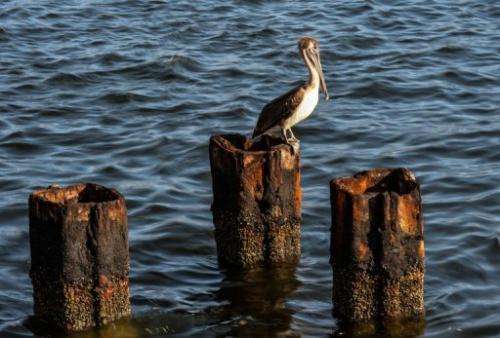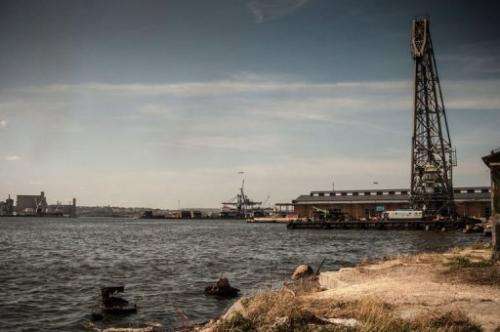Havana Bay slowly reclaims historic splendor

Pelicans and their prey are back in Havana Bay in a sign that efforts to clean up the historic and once splendid port of the Cuban capital are paying off.
"They disappeared long ago but because of the cleanup the fish have returned—and therefore so have the pelicans," said fisherman Eduardo Lozano who spends every day out on the sheltered expanse of water.
The presence of the big-beaked creatures gives credence to local expert claims that pollution in the bay—once a base for Spanish galleons that returned to Europe laden with Latin American treasure—has been reduced by 50 to 60 percent over the past few years.
The cleanup program was launched back in 1998, with a working group known as GTE-BH tracing the contamination to a hundred sources, according to the official Cuban newspaper Trabajadores.
Last year alone, according to a recent article, dumping of pollutants was scaled back by 30 percent compared to 2011.

"Today, crossing the bay by ferry to go from the old town to the Regla neighborhood (to the south of the bay) is a pleasure when just a few years ago the stench was unbearable," Trabajadores said.
Three waterways that make their way through populated parts of southern Havana—and are polluted by various industries—flow into the bay, which spans 5.2 square kilometers and features fortresses called El Morro and La Cabana.
And then there's the Nico Lopez refinery that is due to be shuttered after billowing black smoke into the Havana sky for about 60 years.
It's all part of a plan to transfer all maritime traffic to Mariel, 50 kilometers (31 miles) to the west of Havana, where a vast port is being built, financed by Brazilian capital and realized in large part by construction giant Odebrecht at an investment of about a billion dollars.
The goal is to clear Havana's port of eyesore tankers and container ships to make space for cruise ships and pleasure boats instead, in an attempt to create a tourist destination that takes advantage of the historical setting.
For that reason, restoration work has started on quays in the old town under the leadership of the Office of the Historian. Old customs buildings are also being renovated while tourism and pedestrian zones are being set up.
It remains to be seen if the effort will have the desired effect.
In light of the decades-old US embargo against the Communist-run island, cruise ships that do dock in Havana each year can be counted on one hand, and the few pleasure boats that make it are relegated to a decrepit marina to the west of the capital.
Americans technically are allowed to visit Cuba, but they are required to seek special US government permission to go to the Caribbean island nation.
© 2013 AFP















